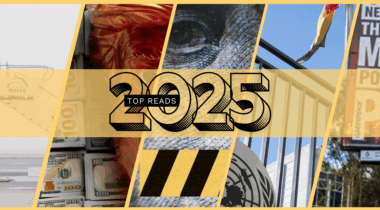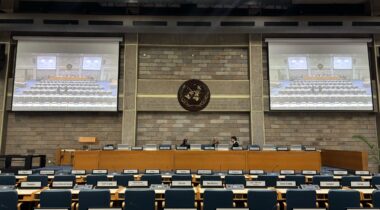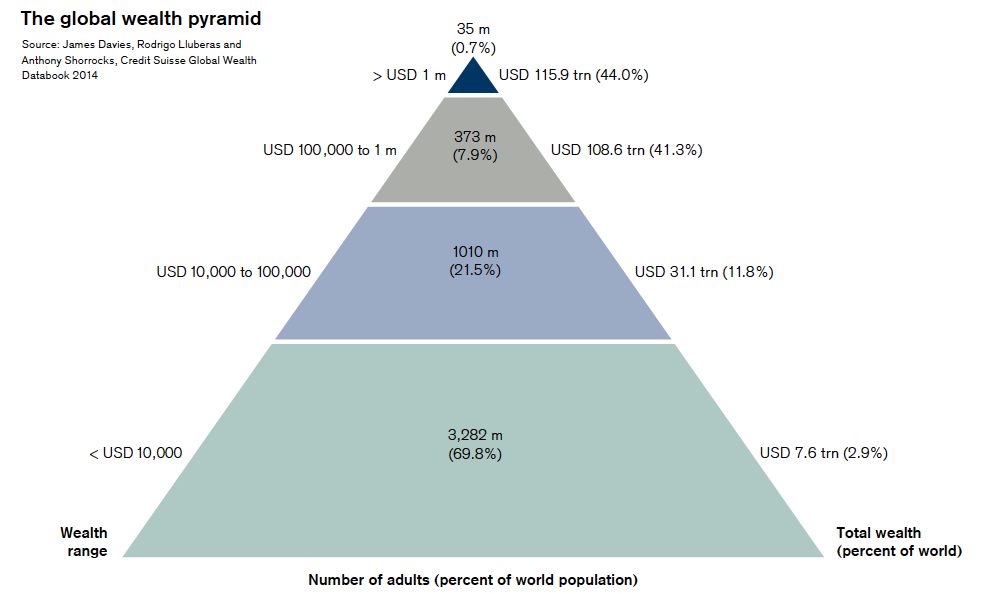
Nick Shaxson ■ A reminder of why everyone is underestimating inequality
![]() In 2012 we published a document entitled Inequality: you don’t know the half of it, in which we made the fairly obvious point that studies estimating inequality almost always fail to take offshore wealth (and income) adequately into account, and thus get things wrong at the top end of the income and wealth scale. We consulted a range of experts, and (as you can see) they all agreed with the basic idea.
In 2012 we published a document entitled Inequality: you don’t know the half of it, in which we made the fairly obvious point that studies estimating inequality almost always fail to take offshore wealth (and income) adequately into account, and thus get things wrong at the top end of the income and wealth scale. We consulted a range of experts, and (as you can see) they all agreed with the basic idea.
We will be doing more work on this in due course, but we just came across this interesting anecdote from the Equality Trust, from May. It was prompted by allegations by Chris Giles of the Financial Times that Thomas Piketty had got his wealth estimates all wrong. (Giles’ accusations were vastly overblown, even if he did score some minor points, but that’s not what we’re arguing here.)
Giles based his argument on data from the UK’s Office for National Statistics (ONS), but as the Equality Trust points out:
“The ONS data is contradicted by a different source of information, the Sunday Times Rich List (STRL). The STRL provides data on the 1000 richest people in the UK. It suggests that these 1000 people have £518.979 billion which is about the same as 40% of the poorest households have according to the ONS Wealth and Assets survey.
Those richest 1000 people, it notes, are approximately 0.00158% of the population.
“The top 0.00158% of the population according to the Wealth and Assets survey only have 1.71% or approximately £162.992bn.
. . .
If the STRL analysis could be transferred to the ONS Wealth and Assets survey without changing the overall amount of wealth the top 0.00158% would have 5.45% of the total wealth.”
For context: not all offshore wealth is hidden simply because of secrecy. Sometimes, particularly when structures such as offshore discretionary trusts come into play, games are played with the concept of ownership, whereby rich people are technically legally separated from assets, but they retain economic powers and rights to enjoy and benefit from and control those assets. They are the economic owners, but not the legal owners. Of course, there are many shades of grey here.
The Sunday Times gets its information from a hardworking combination of official and public data and old-fashioned shoe leather: digging into reports, finding out ownership patterns, talking to people, and more. As such, the Sunday Times is probably more likely to look http://healthsavy.com/product/celexa/ through fancy, tax-dodging ownership structures to get to the meat of who owns what.
Anyway, the Sunday Times finds that the richest individuals have 220% more wealth than the official survey suggests.
Which is a better method? Well, the Sunday Times methodology obviously isn’t perfect either. But the ONS data, which is based on interviewing representative samples of people, is not going to get access to all those super-wealthy people – the majority of whom, we are told, are non-domiciled residents. In fact the Equality Trust says, more specifically:
“The reason the ONS is so far off the STRL’s figure is most likely because there estimation of the top 0.00158% is based on just three households.”
Indeed. It’s fair to say that it’s hard to judge which in direction such a small sample size might knock the overall estimates, but it’s also fair to say that the Sunday Times method of investigating all 1,000 households, rather than extrapolating from just three of them, is likely to lead to the more accurate result.
And what is true of the UK is certainly true, to a greater or lesser extent, for many countries. We would guess that the degree of official underestimation is likely to be particularly stark in developing countries, given that data collection methods are likely to be weaker and less comprehensive, and where governance problems are likely to mean a bigger relative offshore problem.
And don’t forget that not only is inequality generally increasing in many countries, but the rate at which it is being underestimated at the top of the income scale is also almost certainly increasing, because the offshore economy is growing so much faster than the global economy. We estimate conservatively there is some $21-32 trillion in wealth held offshore, less than ten percent of all global wealth, but heavily concentrated at the top of the income pile. (Anecdotally, the Sunday Times Rich lists support this: the total wealth for the top 1,000 rose from £414bn to £519bn from 2012 to 2014, a rise of 25 percent in just two years. And Credit Suisse predicts global wealth rising from $263tn in 2014 to $369tn in 2019, or by 40% in just 60 months. The biggest users of the offshore system, by far, are the very wealthy.)
An endnote to remind readers of a recent blog we did, from Credit Suisse’s global wealth report.
Related articles

Let’s make Elon Musk the world’s richest man this Christmas!

The tax justice stories that defined 2025

The best of times, the worst of times (please give generously!)

Admin Data for Tax Justice: A New Global Initiative Advancing the Use of Administrative Data for Tax Research

2025: The year tax justice became part of the world’s problem-solving infrastructure

Bled dry: The gendered impact of tax abuse, illicit financial flows and debt in Africa
Bled Dry: How tax abuse, illicit financial flows and debt affect women and girls in Africa
9 December 2025

Indicator deep dive: ‘patent box regimes’

Two negotiations, one crisis: COP30 and the UN tax convention must finally speak to each other



